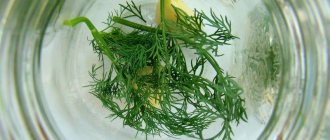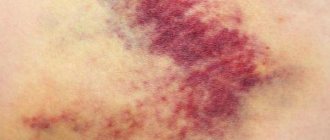What is the difference between bifidobacteria and lactobacilli?
Table 1. Some distinctive features of bifidobacteria and lactobacilli.
| Bifidobacteria | Lactobacilli |
|
|
Bifidobacteria are gram-positive bacteria. They received this characteristic because they do not discolor when stained using the Gram method. Bifidobacteria are anaerobes because they do not require oxygen for energy. They are involved in the activation of parietal digestion. They colonize the intestinal mucosa, forming a natural biological barrier against the penetration of pathogens and toxins. Bifidobacteria produce fatty acids that suppress the proliferation of pathogenic and opportunistic microflora. Participate in the synthesis of B vitamins, vitamin K. Promote the absorption of vitamin D, iron and calcium.
Lactobacilli are also gram-positive, but facultative anaerobic bacteria (can live in oxygen-free and oxygenated environments) that belong to the normal microflora of the body. They produce lactase, which is necessary to break down lactose (milk sugar). Lactobacilli produce lactic acid, which maintains a normal pH in areas of colonization. Like bifidobacteria, they stimulate the immune system upon contact with intestinal cells. Lactobacilli accelerate the regeneration (healing) of the mucosa and participate in the activation of phagocytosis (capture of foreign particles and pathogens by phagocytes). Involved in increasing the production of lysozyme (an enzyme with antibacterial activity).
It is incorrect to draw conclusions about which bacteria are healthier and more necessary for the body. The key to effective functioning of normal microflora is the presence of all its representatives in the correct proportions. The large difference in the ratio of bifidobacteria and lactobacilli should not be misleading. It is more correct to consider this indicator according to typical localization locations. Although lactobacilli constitute up to 5% of the total microflora of the body, they make up 90-95% of the vaginal biocenosis. Their lower content is fraught with bacterial vaginosis.
List of the best probiotics for the intestines: instructions for use
After entering the digestive system, live bacteria have an extremely positive effect on the intestines and adjacent sections:
- are able to restore especially delicate and sensitive microflora of the intestinal mucosa after taking aggressive medications, including antibacterial ones;
- activate the production of vitamin and mineral elements;
- activate the production of digestive elements that contribute to the correct and rapid processing of food and its subsequent removal from the body;
- additionally lower the level of bad cholesterol;
- probiotics relieve inflammation, remove allergens and other harmful enzymes from tissues and organs;
- quickly reduce the acidity level in the colon to normal levels;
- provoke the process of regeneration of the mucous membrane of the digestive tract, and not just one intestine;
- Metabolic disease.
- Foodborne toxic infections.
- Immunodeficiency state.
- Viral infections - influenza, acute respiratory infections.
- Peptic ulcer, colitis, pancreatitis, hepatitis, cholecystitis, complicated by intestinal inflammation.
- For dysbacteriosis at any stage.
- Malabsorption syndrome.
- Hepatitis.
- To prevent mastitis.
- Salmonellosis.
- Diseases of the urogenital tract.
- Viral-bacterial infection.
- Constipation (including chronic).
- For diarrhea.
- Inflammatory diseases of the genitourinary organs.
- Pneumonia, bronchitis, complicated by a violation of the intestinal microflora.
- Prenatal preparation to prevent dysbacteriosis.
- Colibacillosis.
- Allergic reaction.
- Staphylococcal infection.
- Prevention of inflammatory complications in the postoperative period.
- After chemotherapy sessions or a course of antibiotic treatment.
List of drugs
Probiotics are drugs used for therapeutic purposes to restore normal microflora. They often mean “live” preparations containing only lacto- and bifidobacteria. But other representatives are also probiotic microorganisms: propionic acid bacteria, thermophilic streptococcus, lactococci. More often they are included in combination products.
Preparations of bifidobacteria
- Bifidumbacterin. Contains B. bifidum strain No. 1. Microbial mass sorbed on activated carbon particles and mixed with lactose. Available in powder form. The effect is enhanced when taken simultaneously with B vitamins.
- Biovestin . Composed of B. adolescentis MC-42. According to official instructions, these bacteria are resistant to major types of antibiotics. Therefore, they can be used without waiting for the end of antimicrobial therapy. Dietary supplement in the form of an emulsion.
- Bifiliz. Like Bifidumbacterin, it consists of B. bifidum No. 1, but additionally contains lysozyme. Powder for the preparation of solution for oral administration.
Lactobacillus preparations
Monopreparations with lactobacilli have found primary use in gynecological practice.
- Lactobacterin. Contains acidophilus lactobacilli. Use in parallel with chemotherapy, including antibiotic therapy, is allowed. Available in powder form for the preparation of solution, tablets, vaginal suppositories.
- Lactozhinal. Includes L. casei. It is used in preparation for planned gynecological operations, childbirth (in women at high risk of bacterial vaginosis), after antibacterial therapy. Release form: capsules.
- Acylact. The composition includes strains of L. acidophilus 100H, NK11, K3H. It is produced in the form of vaginal suppositories, in tablets.
Preparations containing bifidobacteria and lactobacilli (symbiotics)
Symbiotics are combination preparations containing several types of probiotics. Representatives:
- Linux . Includes: L. acidophilus, B. infantis, E. faecium. Available in capsules for oral administration. Allowed for children under one year old and pregnant women.
- Bifiform. Contains B. longum and E. faecium. Produced in enteric capsules. There are varieties in the form of powder and tablets supplemented with B vitamins.
- Biovestin-lacto. Contains B. adolescentis MC-42 and L. plantarum. Emulsion for oral administration. Is a dietary supplement.
Reviews
Lyudmila Alekseevna, therapist, Kaluga: “I prescribe medications for intestinal microflora disorders caused by taking antibiotics. The drugs restore the balance of microorganisms, remove harmful bacteria and waste products. You can find out how Bifidumbacterin differs from Lactobacterin in the instructions for the medications.”
Irina, 31 years old, Smolensk: “I gave medications to infants for dysbacteriosis. The state of health quickly improved, the child stopped crying and being capricious. I know that some children get rashes when using probiotics, but we didn’t experience that.”
Alexey, 45 years old, St. Petersburg: “For a prolonged cough, I took several antibiotics in a row, and then suffered from diarrhea. The therapist advised me to buy Bifidumbacterin and Lactobacterin. I took medication for 1 week 2-3 times a day. The stool has become stronger, and you no longer need to diet.”
Margarita, 29 years old, Rostov-on-Don: “I don’t use drugs to treat dysbiosis, because Linex helps better and faster. I started using Bifidumbacterin and Lactobacterin when, during a routine gynecological examination, I was diagnosed with urogenital herpes. The introduction of a dissolved lyophilisate into the vagina helped get rid of unpleasant symptoms and maintain women's health. If the solution is inconvenient to use, you can buy the drug in the form of suppositories.”
- Varieties of Almagel, indications for use and composition
- What is the difference between relief and relief advance candles?
- What is the difference between Creon and Pancreatin and Mezim?
- How cholecystitis and pancreatitis are treated: differences between diseases, symptoms and treatment
Is it possible to take medications for prevention?
Probiotics are recommended to be used in courses both for the treatment and prevention of dysbiosis. But this must be done following the instructions for use.
Continuous intake of probiotic preparations for prevention is not advisable. This will not cause much harm, but it is more correct to first let the body use its own adaptation mechanisms, and then resort to auxiliary measures in the form of supplements with lacto- and bifidobacteria.
Another reason why probiotics should be considered as reserve drugs is their frequent biological incompatibility with one’s own microflora. Bacteria from drugs often “do not take root” and die in the body. For a healthy person who is not exposed to external factors (antibiotic therapy, taking cytostatics), a balanced diet is sufficient to maintain the normal composition of the microflora.
Contraindications for the use of Lactobacterin and Bifidumbacterin
In the case of a one-time prescription of drugs, it is best to take them one at a time, this will allow the bacteria to settle into the intestines before another type of bacteria enters. First of all, it is advisable to take Lactobacilli, since bacteria of this type are needed significantly less than bifidumbacteria.
Lactobacterin should be taken with caution by people who are lactose intolerant and allergic to dairy products. Bifidobacterin is well absorbed with plant and fermented milk foods, Lactobacterin - with purified drinking water.
The drugs contain substances that are present in the intestines of every person, therefore they have practically no contraindications. The instructions indicate that probiotics should not be used in case of hypersensitivity to active and auxiliary components.
Breastfeeding and pregnancy are not contraindications to the use of drugs.
Food sources of bifidobacteria and lactobacilli
Probiotics are found not only in medicines and dietary supplements, but also in some types of food. But the use of probiotics alone to support the normal composition of microflora is not enough. Bacteria require certain substances to feed and reproduce.
Prebiotics are food components that are not digested in the upper intestine but are fermented in the large intestine. They stimulate the growth and activity of normal microflora.
Table 2. List of dietary probiotics and prebiotics.
| Dietary probiotics | Food prebiotics |
|
|
In continuation of the topic, be sure to read:
- Bifidobacteria: concept, functions and sources of beneficial microorganisms
- Lactobacilli: functions and sources of microorganisms
- Methods for restoring intestinal microflora: drugs and nutrition
- How to restore intestinal microflora after antibiotics?
- Probiotics and prebiotics: definition and list of drugs
- What are probiotics, names of drugs and their types
- What are synbiotics, their benefits and list of drugs
- Symbiotics: concept, list of drugs and products
- What to take along with antibiotics to prevent intestinal dysbiosis?
- Bifidobacteria and lactobacilli in one preparation
We recommend reading:
How is rotavirus intestinal infection manifested and treated?
Compound similarities
These are the most numerous representatives of the gastrointestinal tract microflora, which have a number of similar functions: they create conditions for the normal functioning of the digestive system, improve metabolism, inhibit the effect of carcinogens and help strengthen the immune system.
Main similarities:
- The preparations are based on dried cultures of living microorganisms.
- Medicines are prescribed for diseases of the gastrointestinal tract and female genital organs caused by disruption of the normal microflora.
- Probiotics can be used to treat children (including newborns) and adult patients.
Description of lactobacilli
Lactobacilli belong to the lactic acid microflora. They have the shape of an oblong stick. However, sometimes you can also find oval representatives. They can be located one at a time or combined into groups.
The body has a means of transportation - flagella. Lactobacilli have 100 subspecies. A large number of representatives are present in dairy and fermented milk products.
In the human body, lactobacilli live in the oral cavity and digestive tract. Microbes contribute to the formation of an acidic environment. This creates powerful protection against pathogenic bacteria.
Lactobacilli also help eliminate existing stool disorders. A favorable environment is created for the formation of the gastrointestinal tract. Food is digested in a short time, and the necessary vitamins and microelements are absorbed.
Lactobacilli help the normal functioning of all gastrointestinal organs
Lactobacilli are gram-positive anaerobic microorganisms. The largest number of them is present in the intestines. Microbes are involved in metabolic processes. They are also a natural component of the microflora in the female vagina.
Today, a large number of drugs containing lactobacilli are known. Basic medications are described in the table.
| Acipol | Consists of fermented milk fungi and lactobacilli. The medicine is produced in the form of capsules. Dissolution occurs in the intestines. |
| Acylact | A universal medicine for restoring microflora. The drug has a pronounced antimicrobial effect. |
| Lactobacterin | Contains live acidophilus bacteria. Helps increase acidity in the gastrointestinal tract. Thanks to this, pathogenic microorganisms are destroyed. |
Lactobacilli feed on indigestible fiber. Microorganisms also help digest dairy products and break down lactose. Microbes destroy pathogenic representatives.
By maintaining the level of lactobacilli, it is possible to significantly improve the body's protective function. Preparations containing such bacteria must be used in conjunction with antibacterial medications.











